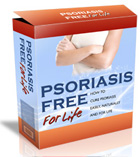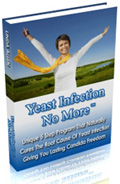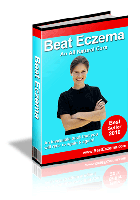I stumbled upon a very old website called www.nutri-notes.com and a 1998 newsletter shows a thorough discussion of leaky gut and everything that can help cure leaky gut. Quick! Click the link, print it out, save it as a PDF, email it to yourself. Old websites like these may just expire and disappear from the internet.
I was pleasantly amazed at the wealth of information this simple web page provided:
http://www.nutri-notes.com/marapr98_simple.htm
This website is so old they don’t even accept online payments when this was made. I emailed the contact person and hope they email back so I can download their whole collection of newsletters and read them to upgrade my knowledge of cures.
I felt it prudent to copy and paste this important page here. It won’t do justice to the original page, but this will have to do as a backup in case this old website disappears from the internet completely. Knowledge like this must be printed, filed, archived and disseminated.
Leaky gut is such a widespread problem, it is at the core of most people’s illnesses, perpetuating a vicious cycle that must be stopped at the very core, our guts.
I have come to a theory that I have a leaky gut condition because I have not stopped expelling liver stones. My desire is to stop liver flushing. And it seems the root cause is a leaky gut.
My personal strategy is to:
- Do a VCO detox.
- Take Ginko Biloba. 1 cap 4x per day
- Take Slippery Elm. 3 caps 3x per day
- Eat okra everyday.
- Then finish off with a 14 day orange juice / coconut juice fast.
- Then do more liver flushes, kidney cleanses and maintenance colon cleanses.
- Probably add l-glutathione and N-acetyl cysteine (NAC)
- Re-study my situation and finally do a 21 and 40 day orange juice / coconut juice fast.
Nothing is set in stone and I will have to play this by ear.
Let’s see if this gives me a model like complexion.
Sounds exciting. A new goal!
One thing that is shaping up is it seems I have to put LEAKY GUT as the FIRST PRIORITY of my eczema cure protocol! Progress! A new august 2007 edition of the eczema cure protocol is forming in my mind.
—————–
Nutri-Notes
“Integrating the Nutrition-Health connection” Vol.5, #2, Mar-Apr 1998
NOTE: This is an HTML version of a newsletter that discusses Leaky Gut Disease and the link with Detoxification. It uses a simplified layout in order to suit Web browsers but it is quite representative of the Adobe Acrobat format that is used in the Newsletter Collection. Adobe Acrobat Reader is a free download from Adobe’s Web Site.
Inside this edition…
Leaky Gut – Detoxification:
The Detox – Leaky Gut Connection
Disruption of the Barrier
Healing the Leaky Gut
Recommended Product for Leaky Gut Sufferers
Part II: Detoxing
Systemic Toxin Removal
Recommended Product for Leaky Gut Detoxification
Leaky Gut – Detoxification Tips
The Detox – Leaky Gut Connection
Newsweek focused on an article recently, called “Gut Reactions”, in which they reported that tiny leaks in the lining of small intestine may play a role in diseases as diverse as asthma and arthritis (Newsweek, November 17, 1997. P. 95-99). What is happening is a new awareness of one of the oldest immune weapons we have – our own gut lining! The lining of our intestine is meant not only to absorb food, but to act as a barrier to keep out invading pathogens. Newsweek calls it, “Intestinal Fortitude”, where the mucosal layer of a healthy gut filters out microorganisms and undigested proteins. When this lining gets battered, by things like aspirin, bacteria, or even the pesticides sprayed on our food, the lining loses its integrity. This is when the door is open to let in the bacteria, the viruses, the parasites – (even undigested food molecules!) which can activate the immune system (and also the autoimmune system). We refer to this loss of integrity as “the leaky gut syndrome”.
In the Mar-Apr 1996 issue of the Nutri-Notes, we reported on the leaky gut syndrome and its connection to disease. Various toxins can make their way through the barrier of the intestinal lining when it is permeable. Those toxins travel to the liver where they are detoxified. The liver has phases of detoxification to deal with eliminating foreign substances (phase I and II), but when the detoxification processes of the liver are impeded, it results in manifestation of disease, depending on where the toxins exert their effect. If the liver is overloaded and can’t remove the toxins, they can recirculate or deposit in the body. Either way, they will upset the apple cart of balance. The toxins can recirculate to the intestinal area where they increase the permeability of the intestinal lining even more. The relation to toxic overload on the liver and leaky gut is cyclical: A leaky gut will allow more toxins to enter the system, and, conversely, toxic overload of the liver increases leaky gut.
We are exposed to an amazing load of toxins in our everyday encounters, from environmental poisons to metabolic wastes that are not efficiently eliminated. As we are exposed to more and more toxic insults, we are losing the ability to ward off disease-causing agents. The body has no recourse but to malfunction and lose cell-to-cell communication. Zane Gard remarked that, “Although the human mechanism is known to be an accommodating species, ecological alterations are now occurring at a faster rate than our bodies are able to adapt. There is perhaps no single contributing factor, which has accelerated these environmental transformations more than that of our current widespread uses of harmful chemical substances” (Gard, Zane R et al., Explore for the Professional. 1995;6(4):39-45). This issue of the newsletter deals with positive solutions for a) protecting the immune barrier of the gut, and b) providing optimal detoxification aid for waste removal.
“The immunological mechanisms of rheumatoid arthritis probably begin when antigens cross an excessively permeable intestinal mucosa” Carli P et al. Presse Med 1995;24:606-610.
Disruption of the Barrier
The gastrointestinal lining is supposed to absorb our nutrients, and at the same time act as a barrier to toxins. Aside from the physical barrier to invading pathogens, the GI lining makes up a major part of our immune system by furnishing secretory IgA and white blood cells to attack foreign invaders. Some of the things which can disrupt that barrier, however, include:
* bacteria, virus, protozoa
* NSAIDS, alcohol
* free radicals
* endotoxins, environmental toxins, cytotoxic drugs
* inflammation (ie lectin binding)
Leaky Gut and Detoxification – Nutri-Notes Nutrition Information
The inflammation that is caused by food allergies can increase the permeability of the intestinal lining even further. The process of food allergens being absorbed from gastrointestinal tract and initiating an immunological reaction is described in Gastroenterology by Walker & Isselbacher (Gastroenterology 1974;67:531-50). Even in people who do not have excessive permeability, we know that the low grade absorption of undegraded protein into the blood occurs regularly in healthy adults, varying from 2% upward depending on the degree of “leakiness” of their gut (Husby S. et al. Scand J Immunol 1985;22:83-92).
When we stop to consider the damage that can be done by a leaky gut, it’s not surprising that many diseases are associated with leaky gut. These diseases include: Celiac disease, food allergy, asthma, eczema, dermatitis herpetiformis, psoriasis, arthritis, irritable bowel syndrome, inflammatory bowel disease, chronic fatigue syndrome, pancreatic insufficiency, environmental illness, multiple chemical sensitivity, and various others. Even when the leaky gut does not directly cause the disease, the resulting leakiness exacerbates the disease. Symptoms of leaky gut can include: fatigue, arthralgia, myalgia, fever, abdominal discomfort, diarrhea, skin rashes, toxic feelings, memory deficit, and shortness of breath, among others.
The leaky gut is also highly implicated in autoimmune diseases. Some people have more of a genetic tendency than others to activate normal resting T cells, which then attack cells. These cells are supposed to be foreign invaders, but sometimes T cells are activated against the body’s own tissues, as in autoimmune disease. J. Hoofar implicated the leaky gut and undigested proteins in this T cell attack when he said, “It is thought that some dietary proteins escape the enzymatic digestion in the gastrointestinal tract and could possibly launch a polyclonal activation of the resting T lymphocytes in susceptible individuals” (Hoorfar J et al., Diabetes Research. 1992;20:33-41, p. 38).
A prominent researcher in the field of diabetes, F.W. Scott linked the leaky gut to type I diabetes and proposed it as a possible trigger in development of the disease. He said that post-weaning time is a crucial time, because these proteins pass the gastrointestinal barrier and initiate the process of destruction of the beta cells in the pancreas (Scott FW et al. Diabetes Res, 1988;7:153-157). It is important to keep in mind that this is not the only trigger for diseases such as diabetes, however it looks as though it may be an important one. One of the proteins leaking through the gut barrier to initiate diabetes is suspected to be the beta casein protein in cow’s milk. Antibodies to the milk protein are thought to cross react with beta cell proteins in the body and destroy them (Cavallo et al. The Lancet 1996;348:926-928).
Healing the Leaky Gut
Several nutrients help to maintain and fortify the integrity of the intestinal lining, including:
Glutamine is the main fuel that the intestinal cells need for maintenance and repair. Glutamine reinforces the immune system, and there is considerable evidence that glutamine can enhance the barrier function of the gut against viral, bacterial, and food antigen invaders (Hall JC et al. Br J Surg 1996 Mar;83(3):305-312). Glutamine has been proven to reduce cell injury and infection.
Healing the Leaky Gut – Nutri-Notes Nutrition Information Lactobacillus bifidus is a name for friendly bacteria which offset populations of bad bacteria, boosting the immune system. Friendly bacteria especially counteract candida, which can spread long mycelial arms right through the intestinal lining and perforate it, permitting wide-open entry to microorganisms and toxins. Jerusalem artichoke is a dietary source of FOS (fructooligosaccharides), which attract beneficial bacteria to inhabit the gut.
NAG (N-acetyl glucosamine), aside from being able to heal the extracellular tissue surrounding intestinal cells, has the unique ability to decrease the binding of some lectins to the intestinal lining, which can cause inflammation. NAG is one of the few nutrients with the power to bind to the powerful wheat germ agglutinin (WGA) lectin, which can activate T cells and influence autoimmunity in susceptible people.
Vitamins C and E, lipoic acid, zinc and ginkgo biloba are all antioxidants which protect the lining from free radical damage. Additionally, vitamin C and lipoic acid bind heavy metals which can cause disease when deposited in the tissues instead of being detoxified in the liver. Vitamin E maintains the integrity of all lipid cell membranes. Ginkgo biloba also increases circulation in the smaller vessels and capillaries, which increases nutrient delivery and tissue healing. The New England Journal of Medicine notes that zinc is involved in clearance of infection, increased levels of brush-border enzymes, regeneration of epithelial tissue, and improved absorption of water and electrolytes (NEJMedicine. Sept. 28, 1995. 333(13):839-844).
Cat’s claw is a novel herb that has been researched lately for its, “remarkable ability to cleanse the entire intestinal tract and help those suffering from different stomach and bowel disorders”, including Crohn’s disease, gastritis, ulcers, parasites, candidiasis, diverticulitis, hemorrhoids, leaky gut, and intestinal flora imbalance (Dr. Brent Davis, DC Wellness Advocate Feb 1995;5(1):1-4).
DGL (deglycyrrhizinated licorice) increases the integrity of the mucosal cells – it increases the life span of the intestinal cells, improves the quality of protective substances, and improves blood supply of nutrients (Glick L. Lancet ii:817, 1982). Additionally, it has a high healing rate and significantly low relapse rate for ulcers (Kassir ZA Irish Med J 78:153-56, 1985; Irish Med J 1985;78:153-156).
Slippery elm is a soothing, protective demulcent reknowned for its beneficial effects on the gastrointestinal lining. Slippery elm calms the inflamed mucous membranes of the stomach (Balch JF Presc for Nutr Healing 1990, Garden City, NY). In addition to a soothing texture that coats the stomach lining, slippery elm contains the fiber-rich ingredient mucilage which stimulates mucus secretion (especially protective against ulcers).
Recommended Product for Leaky Gut Sufferers
Lynn Toohey, PhD, recommends Total Leaky Gut as it provides a comprehensive array of nutrients to support the integrity of the intestinal lining, one of the most crucial assets to health we have. Click here for more information on Total Leaky Gut, and click here for more information on Nutri-West, Inc., the manufacturer.
Part II: Detoxing
Healing the intestinal lining fortifies our first line of immune defense. We must also address the accumulation of toxins already in the body, and those which we constantly add. Environmental toxins are rising at an alarming rate. James Braly says that, “Seriously allergic and sensitive people are essentially no different from everyone else – it’s a difference in degree, not kind. Their suffering is a clear warning to the rest of us about the incredible invisible dangers of our surroundings” (James Braly, MD. Dr. Braly’s Food Allergy and Nutrition Revolution. Keats Publ. New Canaan, Conn. 1992).
Fasting to detox can release the toxins from the fatty tissue too quickly, especially in those who are overloaded. Reducing caloric intake can facilitate the process and rest the liver without trauma. Fasting also robs the body of the necessary nutrients needed to conjugate toxins, and stresses the already abused adrenal glands and pancreas by forcing low blood sugar regulation. A good protein powder to mix with fruit juice or tomato juice is an excellent way to slowly reduce caloric intake enough to rest the system while detoxifying.
Leaky Gut and Detoxification – Nutri-Notes Nutrition Information
Leaky Gut and Detoxification – Nutri-Notes Nutrition Information
Leaky Gut and Detoxification – Nutri-Notes Nutrition Information
For best results, add a good detox supplementation product to the regimen to assure efficient removal of toxins without intense and dramatic overload. If detox pathways are not running efficiently, released toxins are left to recirculate and redeposit in body tissues, causing pain, inflammation and disease.
Systemic Toxin Removal
There are seven detox pathways in the body – liver, bowel, blood, lungs, lymph, skin and kidney. All of these pathways should be addressed, and the proper nutrients should be provided to ensure a slow, efficient, healthy removal of stored toxins, both environmental and internal.
The Liver: The liver bears the brunt of detoxifying poisons. One of the reasons the cruciferous vegetables, like broccoli, have a reputation for being anticarcinogenic is because they have beneficial effects on the liver’s detox paths. Glutathione is one of the most important detoxifying agents in the liver because it conjugates toxins, making them water soluble and drawing them out of the body. Other important conjugating agents include taurine, glycine, and methionine. As part of the detoxification process, free radicals are generated. It is imperative to have adequate antioxidant protection. Antioxidants include vitamin C, vitamin E, beta carotene, quercetin, selenium, coenzyme Q 10, taurine and curcumin. Zinc, selenium and glutathione are necessary for antioxidant enzymes in the body. When glutathione is taken in the reduced, active form, it saves the body the energy it takes to reduce it to its active form.
Systemic Toxin Removal – Nutri-Notes Nutrition Information
Other liver detox nutrients: N-acetyl cysteine (NAC) has specific antioxidant action in the liver, and is known to protect cells. Red beets are very cleansing and have a specific action on the liver. Chlorophyll helps liver detox, and reduces carcinogen binding to DNA (J Nat Canc Inst Jan 4 1995;871):11). Dandelion has been traditionally used to treat liver congestion and inflammation of liver and gall bladder (Hoffman D. The New Holistic Herbal), and yellow dock also helps in liver detoxification.
The Bowels: Our colon is sometimes called, “the final elimination pathway”. Since it is an elimination pathway for toxins, it is important that this pathway is not obstructed. Inefficient colon elimination results in toxin storage instead of removal. There are many nutrients which can facilitate the optimal functioning of the bowels. Many plant substances are high in fiber, such as beet root, asparagus, and broccoli. Additionally, there are many phytochemicals in these plants that favorably influence detox pathways. Beets also provide a good substrate source for the short-chain fatty acids (SCFA’s) which maintain the health of the colon (Titgemeyer, E C et al. American Journal of Clinical Nutrition, 1991;53:1418-24). These SCFA’s can be effective against inflammatory conditions and those conditions associated with abnormal cell proliferation (Am J Clin Nutr 1995;61:75-81). Yellow dock stimulates bile and can relieve constipation without pain (Tierra L. The Herbs of Life. The Crossing Press, Freedon, Ca. 1992 pp. 82-83). Dandelion can also relieve constipation.
Blood: Chlorophyll is the main component of the plant’s blood, just as hemoglobin is the main component in human blood. Chlorophyll has long been used for its blood-cleansing and medicinal properties (J Nat Prod 1992;55:1241-44). Chlorophyll has been known to correct bacteria-scavenging activity in the blood (Vestn-Dermatol-Venerol 1990;(8):67-9). Dandelion purifies the blood, mainly by straining and filtering toxins and wastes from the bloodstream (Mowry DB. Scientific Validation of Herbal Medicine. Keats Publ. New Canaan, Conn. 1986). Yellow dock is so well-known for its blood-cleansing properties, it is used synonymously with the term, “blood purifier” (Tyler V. The Honest Herbal. PPP, Ny, NY 1993).
Systemic Toxin Removal – Nutri-Notes Nutrition Information
Lungs/lymph: Mullein is important in the detox pathway of the lungs and the lymph; it tones mucus membranes, reduces inflammation, and facilitates expectoration (Hoffman D. The New Holistic Herbal. Element Publ. Rockport, Mass. 1990). One of the flavonoids contained in mullein is hesperidin, which inhibits histamine release from mast cells (histamine can cause sneezing, itching, watery eyes, etc.) and has proven to have effective anti-allergic action (Yakugaku-Zasshi, 111:193-98). Additionally, mullein possesses antibacterial properties to prevent toxic invasion (Mowry DB. Scientific Validation of Herbal Medicine. Keats Publ. New Canaan, Conn. 1986).
Skin: Yellow dock is helpful in skin conditions, especially those caused by blood-borne toxins; it has a natural iron content which builds the blood (Mowry DB. Scientific Validation of Herbal Medicine. Keats Publ. New Canaan, Conn. 1986). Robyn Landis advises that skin conditions that are the result of accumulated wastes can temporarily appear worse, because backed-up wastes are released into the blood; the more aggressive the liver detox, the more of a load that is unleashed (Landis, R. Herbal Defense. Warner books, NY, NY 1997). (This is why a gentle, non-fasting, nutrient-supported detox regimen is recommended!)
Kidney: Dandelion works on four of the major detox pathways: kidney, blood, liver, and colon (Mowry DB. Scientific Validation of Herbal Medicine. Keats Publ. New Canaan, Conn. 1986). It has the power to stimulate kidney function and the urea detox pathway, while preserving potassium status. “This herb is a most valuable general tonic and perhaps the best widely applicable diuretic and liver tonic” (Hoffman D. The New Holistic Herbal, Element Publ. Rockport, Mass. 1990 p. 196).
Systemic Toxin Removal – Nutri-Notes Nutrition Information
Recommended Product for Leaky Gut Detoxification
Lynn Toohey, PhD, recommends Total Systemic Detox, a new and technologically-advanced product that utilizes the latest research in the development of a scientific formula designed to optimize support of all the detoxification pathways. Click here for more information on Total Systemic Detox, and click here for more information on Nutri-West, Inc., the manufacturer.
Leaky Gut – Detoxification Tips
Some of the toxins which enter through a leaky gut are actually undigested food macromolecules which the immune system doesn�t recognize. To reduce the antigenicity of food, hydrochloric acid (HCL) can be utilized to break down protein. HCL also prevents bacterial invasion. Additionally, pancreatic enzymes can help break down food particles so that they are not recognized as foreign objects by the immune system.
When detoxing, reducing caloric intake can rest the system without the nutrient depletion of fasting. A good protein powder mixed with juice or rice milk can help in detox by providing cell-building amino acids while providing reduced caloric nourishment.
More Information
If you like what you see here, please check out the full Nutri-Notes Newsletter Collection and the Nutritional Physiology book, both valuable sources of fully referenced nutrition information. They are both available for online purchase and immediate download for your convenience and future research requirements.
Please address any comments/questions to the editor:
Lynn Toohey, MS, PhD, Nutri-Notes, Fax: (970) 206 9167 (International: +1 970 206 9167)
E-Mail: ltoohey@nutri-notes.comWorld Wide Web: http://www.nutri-notes.com
Copyright � 1994-1998 Nutri-Notes, Lynn Toohey. All rights reserved.
Not to be reproduced in whole or in part without written permission.






Speak Your Mind